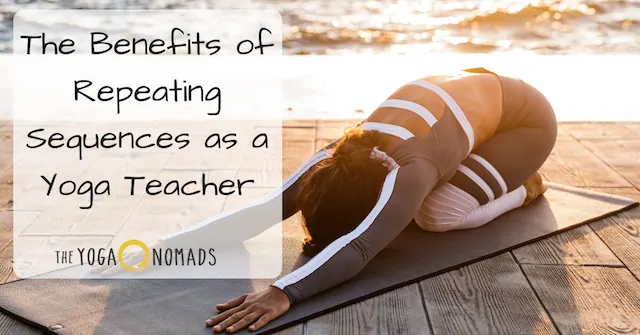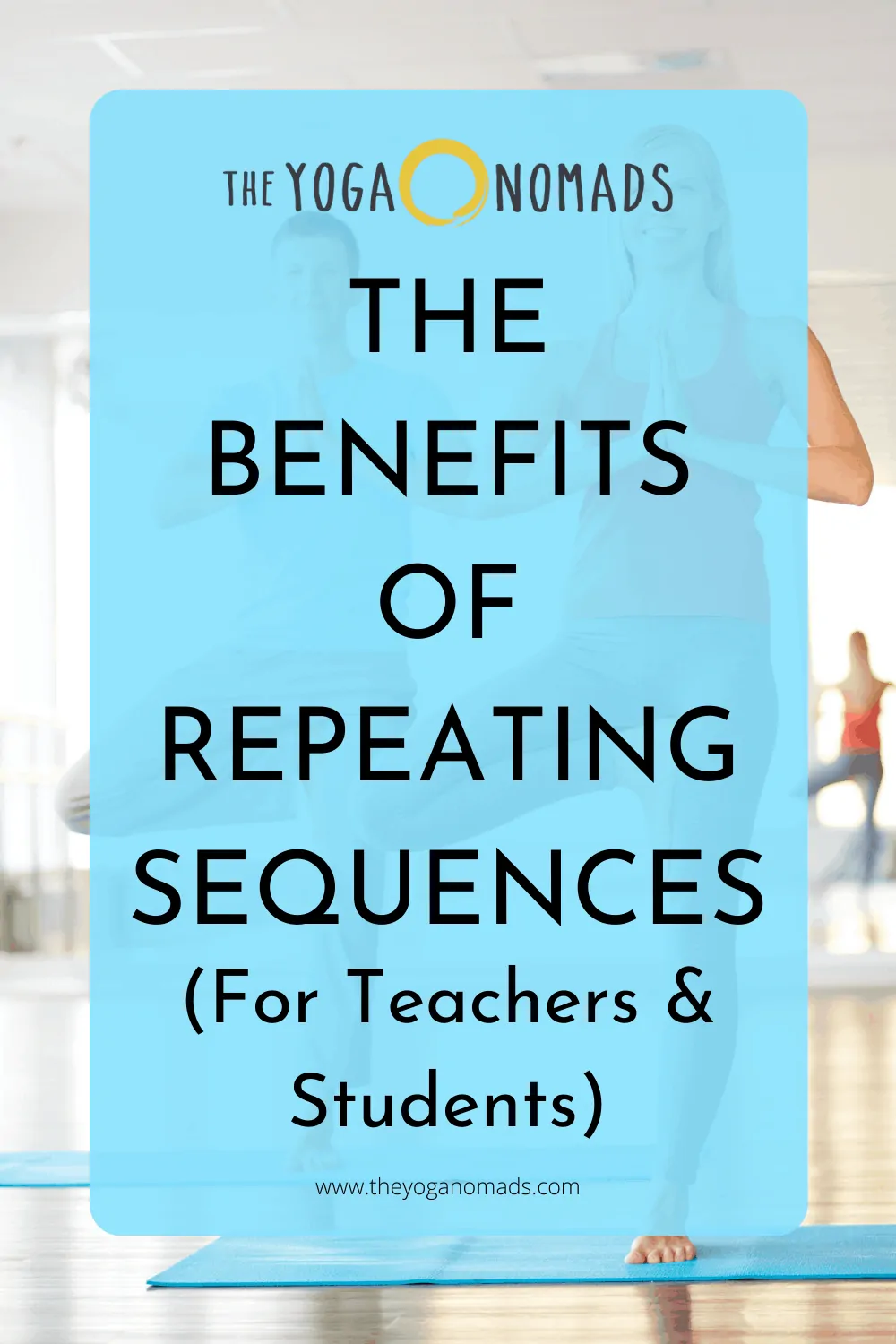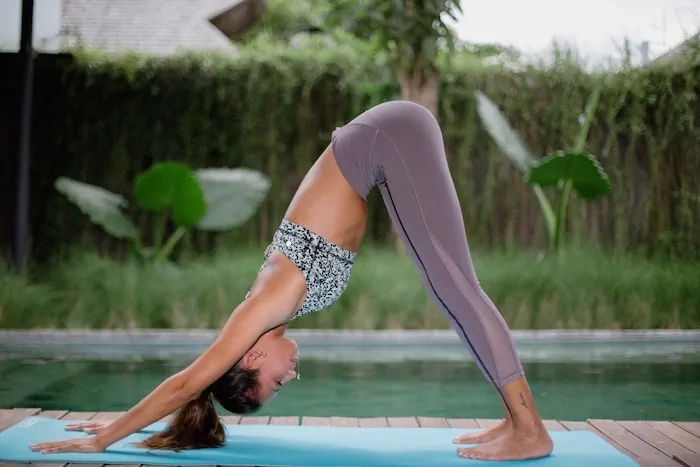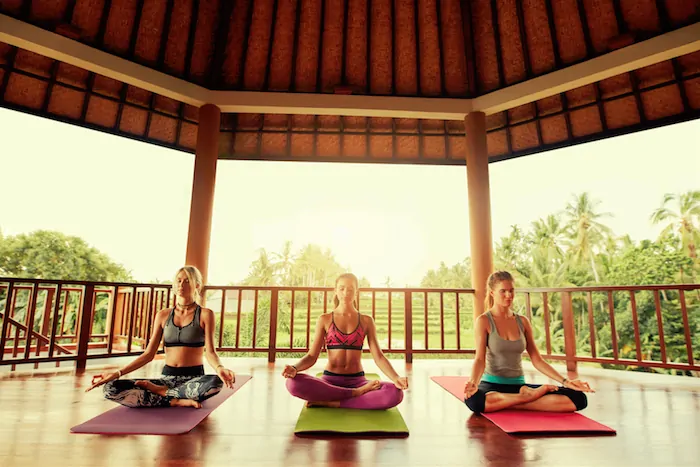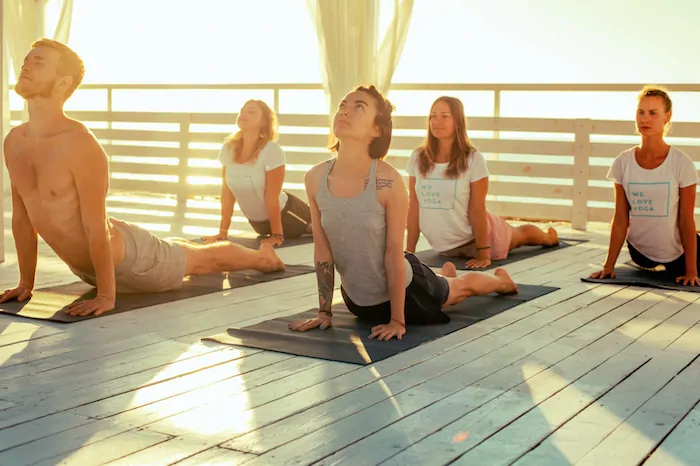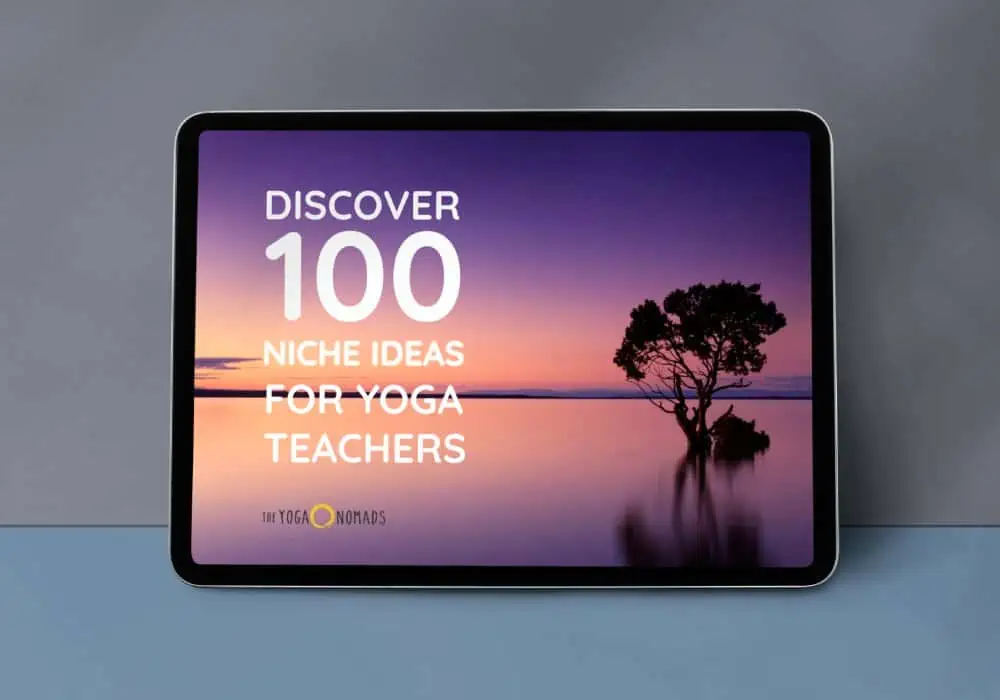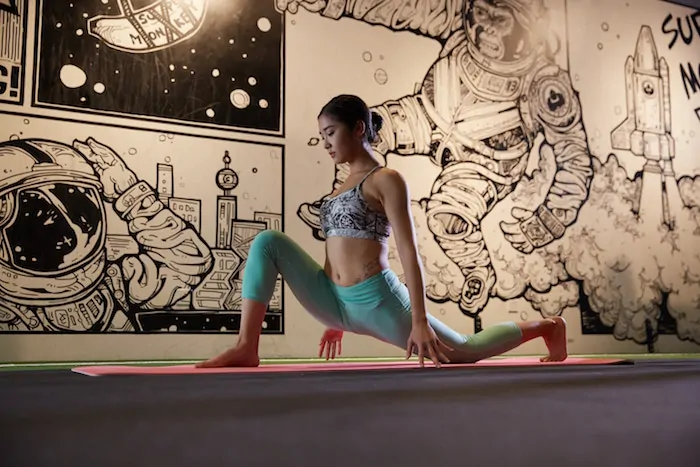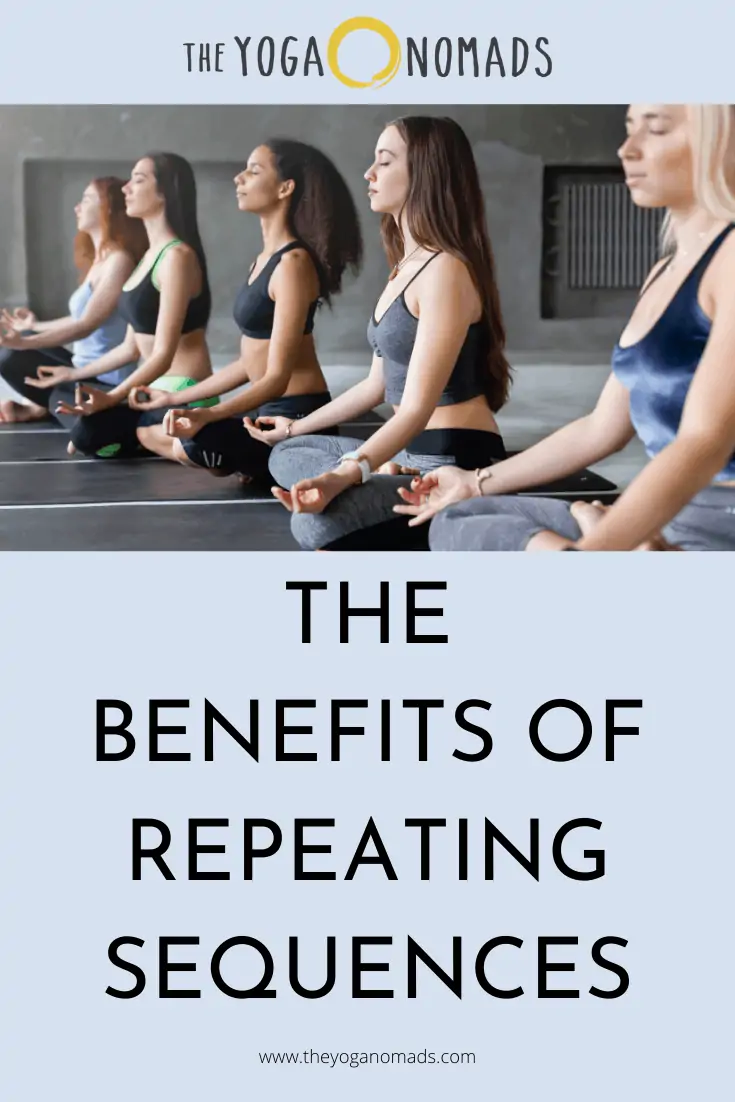In the modern yoga world that is dominated by fast-paced vinyasa flow, there is a growing pressure for yoga teachers to consistently offer a new unique class every single time they step in front of a room of students.
Creative sequencing has become paramount and is one of the key defining factors that yoga teachers utilize to differentiate themselves and their classes from the pack. Of course, creative sequencing and new fresh content has a place in what teachers offer their students. Yet, believe it or not, it isn’t the be all and end all of what makes a great teacher or class.
In fact, there is a rising argument for the opposite- that the overarching focus on fast-paced, unique class content can be detrimental- both to the teacher and the student.
Jason Crandell, a leading yoga teacher and teacher trainer based in San Francisco, strongly believes that consistency and repetition far outweigh change and fluidity. ‘We do our students a disservice when we aren’t consistent and we prioritize difference. We also do ourselves a disservice as teachers because we simply can’t keep up.’

Pin me first? Then keep reading!
Jason believes that one of the greatest myths in modern yoga is that students will get bored if classes are similar and have repeated elements. In his vast experience as a highly successful and sought-after teacher, Jason adamantly states that one of the greatest reasons for his sold-out classes and high student retention is the fact that his classes are consistent, repetitive and to a certain degree, predictable.
Repeating class sequences has benefits for both students and teachers. Let’s explore these benefits in a little more detail.
Contents
Benefits for Teachers
Avoid burnout
Let’s face it, coming up with new themes and sequences for every single class is exhausting, time consuming and ultimately unsustainable. Whether you are teaching 1 or 2, or 10 or 12 classes a week, constantly coming up with fresh content can result in a great deal of stress and pressure. When we prioritize difference over similarity, this can also result in sequences that are not properly planned and not entirely safe. Sequencing is an art, and while the sheer number of yoga asana poses does allow for an extreme amount of diversity, jumping from various pose to pose without proper preparation is simply quite dangerous. Creating safe, sturdy, reliable flows that are somewhat malleable will offer you the benefit of having a carefully orchestrated sequence, that has a degree of flexibility to dabble with unique elements.
Student retention
It is a common fear that offering repeated classes will bore students and result in a significant drop in attendance. However, leading teachers around the world that stand by the argument for repeated sequences actually have a very high student retention rate. As Jason states, ‘What is really inspiring to people is progress. People want to learn and grow.’ Even if students are showing up to 4 or 5 classes a week, when the classes are always significantly different, it is very challenging to build steady progress. Students actually appreciate the familiarity of sequences, as well as being able to appreciate their own evident development. When sequences are repeated throughout a week, or the same theme is explored for several weeks at a time, it allows students to really grasp these concepts and poses in a far more advanced way.
Clarity, Structure & Confidence
When teachers repeat sequences for a period of time, or have a handful of reliable sequences that are interchangeable according to the needs of the class and learning environment, it enables a significant refinement and advancement of one’s skills as a teacher. Having set themes that rotate every 4-6 weeks allows you the time and space to really explore a topic or series of poses and feel confident in what you are delivering. You have the chance to hone your language skills and truly observe and meet the needs of your students. Class concepts need time to take shape, and a gestation period is often necessary for ideas to mature and fully form. As Byron Baptiste states “Don’t think you have to push the pieces around to make your classes more interesting. Become more interesting in the way you teach and what you offer from your heart, not in the sequence that you teach.”
The 80/20 Rule
Jason structures his classes around themes that last for a month. Within this month, he follows an 80/20 rule, whereby 80% of the class is the same, and 20% is different and unique from class to class. This balance allows teachers and students to refine their skills and work towards more in-depth learning and advancement, while also satisfying that thirst for creativity and change. Monthly themes are a terrific idea and are a sustainable way for teachers to create class plans that not only offer full-bodied, well-rounded classes, but also build towards a greater journey for students to follow and progress. The similarity between classes allows for more refinement, insight, mastery and skill. While the element of change creates newness, challenge and intrigue.
Benefits for Students
Practice makes perfect
While there may not be any ‘perfect’ pose in yoga, the idea that practice creates progress is key in everything we do as human beings, as it is in yoga. The best way to properly learn is through repetition. When we think of any other modality or hobby- be it tennis, painting, cooking, or learning a musical instrument- a huge amount of practice and repetition is required to improve and develop, especially in the beginning. The same is true of yoga. Without repeating sequences and poses, it can be very challenging for students to grasp the myriad of intricacies that each and every yoga asana offers. When a theme is approached for several weeks, it allows students to follow a trajectory of improvement. There is a desire to show up and try again. Light bulb moments appear, dots are joined, and essentially, poses and concepts once considered ‘impossible’ are indeed, quite possible. Our ability to ‘master’ anything as human beings is attractive. We tend to give up on anything we consider we are thoroughly incapable of. When yoga classes are constantly varied, this kind of steady progress is absent and students can be left floundering. Yoga is a practice, and without practice, there is little room for improvement.
Going Deeper
Yoga is an age old practice that offers a rich plethora of information that can barely be grasped in a single lifetime. Trying to convey the depths of yoga in a 60 minute class is entirely impossible. Creating themes and sequences that last over a series of weeks or months allows students to dive more intricately into the subtle, yet profound, teachings of yoga. This may mean working with a series of poses. It may mean going deeper into working with the breath. It may revolve around deeper philosophical aspects of yoga. It may mean working with bandas or mudras or mantras. Many yoga practitioners approach yoga classes for the physical practice. Yet, this evolves. Yoga changes us, it whets our appetite for more and students quickly develop a mounting desire to dip their toes deeper into the yogic ocean. While every yoga class should be a full rounded, total class in and of itself, repeating sequences and focusing on themes offers students far more than a mere sweat-sesh.
Creatures of Habit
Yep, it’s true, we are creatures of habit. We thrive on familiarity and adore comfort. It is simply how we are programmed. Of course, this differs from person to person, student to student, but there is something rewarding about consistency and expectation. Repeating the same class for the duration of your teaching career is not a great plan! Yet, having a degree of repetition in classes is reassuring. Coming to class for students can be intimidating and overwhelming. Putting ourselves in foreign environments can be remarkably frightening and unnerving. This is even more evident for beginners to the yoga mat. Having a degree of commonality for a period of time allows students to grow in confidence, skill and surety. As students experience growth, it creates a steady base from which to move forwards and lean into new challenges. Like sailors, we master the skills to take to the seas with safety and confidence, before we venture into uncharted waters.
Keeping Safe
Unfortunately, the reported cases of yoga-related injuries are on the rise. A certain degree of blame has been placed on social media and the desire to achieve and imitate advanced poses without properly understanding or preparing the body for them. On Instagram, it’s easy to look at an advanced asana pose and try to launch into it haphazardly. Instagram removes the understanding of every pose being a journey, not a static image. Proper yoga sequencing and repetition of sequencing and poses is by far the safest way for students to advance in their practice and reach poses that require more skill. Spending a full class working towards a peak pose, or spending a whole week or month exploring related groups of poses and working to more advanced modifications, teaches students how to safely approach their practice. Yoga is a journey. Each class is a journey. Moving into each pose is a journey. Learning how to approach yoga asana in a safe and calculated way can prevent injury and promote mindfulness in students.
Free download: 100 Niche Ideas for Yoga Teachers
Download nowThe Round Up
Evidently, there are a number of significant arguments for why repeating sequences will benefit both yoga teachers and yoga students. Keep in mind, as a teacher, you cant always please everyone. Every person who walks into the room has unique needs and preferences. The best you can do as a teacher is to offer well-rounded classes that you feel truly confident and capable of delivering. When you offer your students a journey that lasts beyond the 60 minutes of a single class, chances are, they will keep showing up, eager to learn, improve and advance in new ways.
Popular teacher Elena Brower mirrors these points in a final quote worth pondering; “On purpose, I will teach the same or similar sequences all week long so that people can maintain an interesting relationship with the concept. Always putting myself to the task of trying to find something new to say every time is actually more wasteful than it is useful.”
Want to make a more successful living as a yoga teacher? Discover 25 new ways to support yourself and thrive here.

